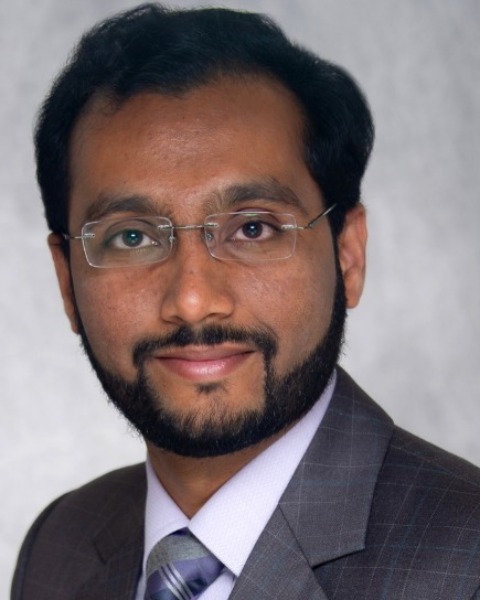Tinnitus and Hyperacusis (TH)
PP1406 - Investigating Peripheral Mechanisms of Chronic Tinnitus in Young Normal-Hearing Adults

Hailey A. Kingsbury, B.S. (she/her/hers)
Doctor of Audiology Student
University of Iowa
University of Iowa
Iowa City, IowaFinancial Disclosures: I do not have any relevant financial relationships with anything to disclose.
Non-Financial Disclosures: I am affiliated with National NSSLHA and am the President-Elect for the 2022-23 school year.
Sarah E. Kingsbury, M.A.
Audiology Extern
Mayo Clinic
University of Iowa
Naperville, IllinoisFinancial Disclosures: I do not have any relevant financial relationships with anything to disclose.
Non-Financial Disclosures: I do not have any relevant non-financial relationships with anything to disclose.- SG
Srividya Grama Bhagavan, BASLP, MASLP (she/her/hers)
PhD student
university of IowaFinancial Disclosures: I do not have any relevant financial relationships with anything to disclose.
Non-Financial Disclosures: I do not have any relevant non-financial relationships with anything to disclose. 
Valerie Ingalls, BA (she/her/hers)
University of Iowa
Coralville, IowaFinancial Disclosures: I do not have any relevant financial relationships with anything to disclose.
Non-Financial Disclosures: I do not have any relevant non-financial relationships with anything to disclose.
Ishan S. Bhatt, PhD (he/him/his)
Associate Professor
University of Iowa
Iowa City, IowaFinancial Disclosures: I do not have any relevant financial relationships with anything to disclose.
Non-Financial Disclosures: I do not have any relevant non-financial relationships with anything to disclose.
Lead Presenter(s)
Presenter(s)
Contributor(s)
College-age adults (N=288) with no tinnitus (n = 199) and chronic tinnitus (n = 89) were compared to investigate peripheral auditory mechanisms underlying tinnitus. It was hypothesized that young adults with chronic tinnitus would exhibit evidence of cochlear deafferentation and elevated central gain. Linear mixed model analysis was used to evaluate the main effect of tinnitus on hearing thresholds, DPOAE amplitudes, and auditory brainstem response (ABR) wave I, III, and V peak-to-peak amplitude and latency measures. Individuals with chronic tinnitus exhibited elevated hearing thresholds and reduced ABR wave I amplitudes, but no significant relationship with DPOAEs and remaining ABR measures.
Summary:
Large-scale epidemiological studies using nationally representative samples have revealed that about 8% of college-aged young adults experience bothersome tinnitus lasting ≥ 5 minutes in the past 12 months. Most young adults with bothersome chronic tinnitus do not seek professional help, as they commonly consider it to be a “normal” phenomenon. Yet, they often experience subclinical anxiety, depression, and poor sleep quality. Past studies investigating physiological mechanisms underlying tinnitus focused on older adults seeking professional help. However, the physiological mechanisms underlying chronic tinnitus in young adults not seeking professional help remains elusive. This population provides a unique opportunity to investigate the physiological basis of tinnitus, as the age-related confounding factors are absent (e.g., age-related hearing loss and systemic diseases). This study aimed to identify the peripheral auditory mechanisms involved in bothersome chronic tinnitus in young adults. We hypothesized that young adults with bothersome chronic tinnitus would exhibit evidence of cochlear deafferentation and elevated central gain.
We screened about 5000 young adults using a questionnaire adopted from the National Health and Nutrition Examination Survey. Participants were recruited from the University of Iowa and surrounding areas. Young adults reporting no tinnitus and bothersome chronic tinnitus were invited to participate in the present study. Participants filled out a questionnaire about hearing status, tinnitus, and family, health-related, and audiological history. Individuals with hearing thresholds within clinically normal range (≤ 25 dB HL from 250-8000 Hz) in both ears were tested further. Tinnitus-related distress was evaluated using the Tinnitus Handicap Inventory and Tinnitus Functional Index. Hearing thresholds, extended-high frequency hearing thresholds, DPOAEs (F2:1-16 kHz), click-evoked auditory brainstem responses (ABR) (80 dB nHL, sweeps: 2048) were measured from both ears. Lifetime noise and firearm exposures were calculated by a standardized interview. Head size was measured. A sample of 288 participants, 199 with no tinnitus and 89 with chronic tinnitus, were included in the present study.
A linear mixed model was used to evaluate the main effect of tinnitus on hearing thresholds, DPOAE amplitudes, and ABR wave I, III, and V peak-to-peak amplitude and latency measures. The linear mixed model allowed for the effects of potential confounders (such as head size, age, sex, ethnicity) and repeated measures (such as test frequencies) to be controlled while testing the association between tinnitus and audiometric measures. The results showed that individuals with tinnitus showed significantly elevated thresholds, yet no significant elevation in DPOAE amplitudes. Further, participants with tinnitus exhibited significantly reduced ABR wave I amplitudes, but no significant reduction in wave III and V amplitudes. Major confounders, such as head size, sex, ethnicity, age, lifetime noise exposure, firearm exposure, and methodological repeated measures, revealed a significant association with ABR, DPOAE, and hearing threshold measures.
The results suggest that young adults with bothersome chronic tinnitus exhibit subtle dysfunction in peripheral auditory mechanisms. They further suggest the role of cochlear deafferentation and abnormal elevation in central gain for tinnitus perception. Further research is needed to investigate the role of central auditory mechanisms and non-auditory structures for tinnitus generation in young adults.
Learning Objectives:
- Explain the relationship between chronic tinnitus and hearing thresholds, DPOAEs, and ABR amplitude and latency measures.
